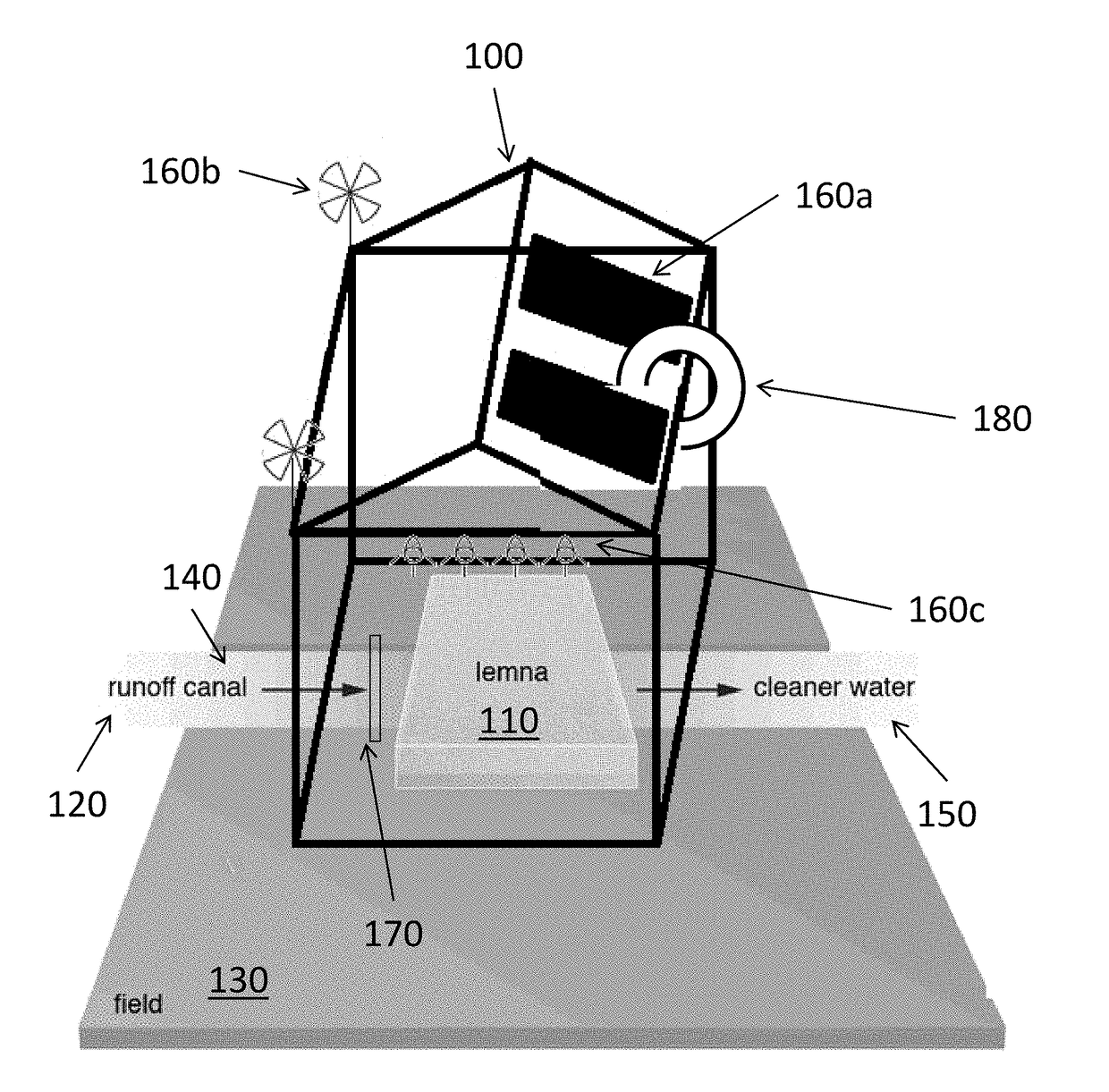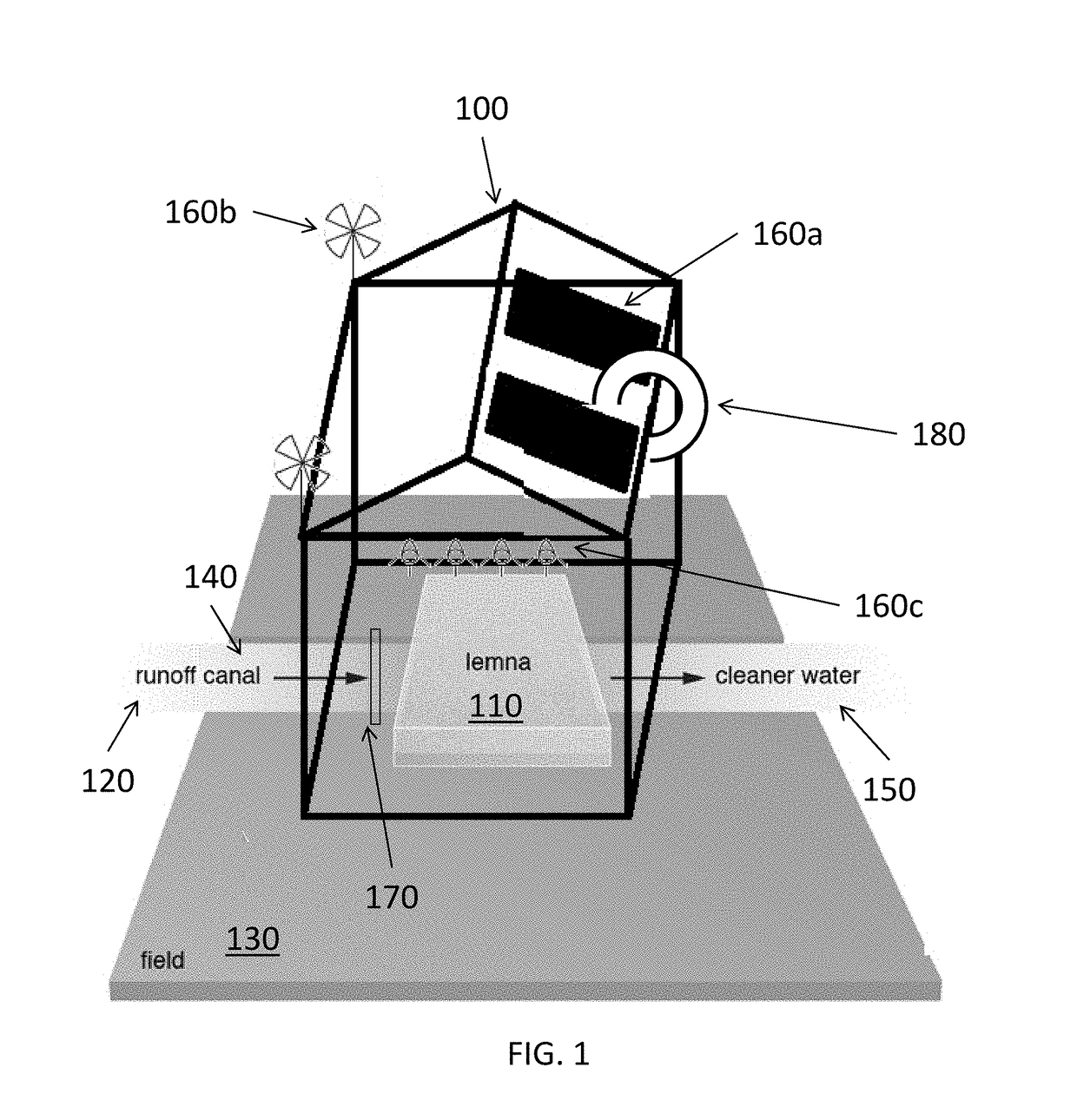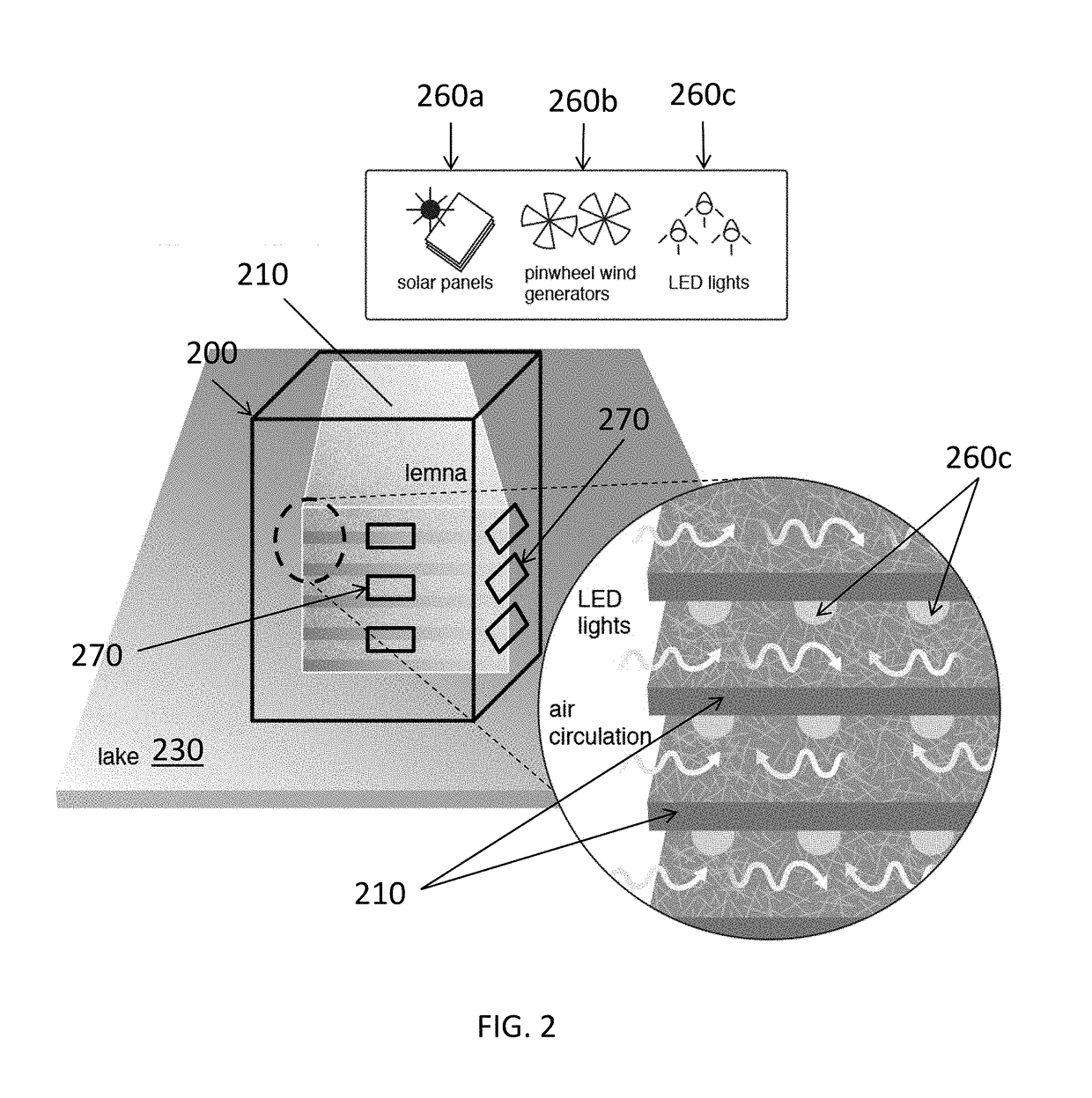Devices, systems and methods for enhanced biomass growth in greenhouses
- Summary
- Abstract
- Description
- Claims
- Application Information
AI Technical Summary
Benefits of technology
Problems solved by technology
Method used
Image
Examples
example 1
ral Runoff Purification with Duckweed
[0078]Duckweed is grown in five layered, shallow, rectangular enclosures, wherein each layer is vertically arranged in step-wise tiers, each approximately 1 meter in depth. Agricultural runoff flows into the enclosure creating or sustaining a depth of 6-8 inches of water, with the duckweed suspended in the contained water, making contact with and removing contaminants from the water as it flows through the layers before flowing out of the enclosure. The enclosure is configured such that the duckweed can grow using natural sunlight alone, or is outfitted with LED lights that are powered by a single or combined power sources selected from solar panels, pinwheel wind generators or other alternative energy sources. To enhance the growth of duckweed by delivery of CO2, a CO2 sorbent formed in a matrix is configured as a rotating wheel that rotates from inside the enclosure to outside the enclosure. Rotation of the sorbent matrix enables CO2 to be tran...
example 2
n of Indoor CO2 by Absorption and Delivery to a Greenhouse
[0079]Duckweed is grown within a 4×4 growth tent in the basement of a building as shown in FIG. 3. A carbon purification system may be installed in an indoor living or working space. To reduce high concentrations of CO2 a system is provided comprising a sorbent for capturing CO2 and transferring it to a 4×4 growth tent for growing duckweed. The sorbent surface may first capture the CO2, then transfer it through the HVAC system to the growth tent where the CO2 is consumed by the duckweed. The growth tent may comprise water, light, nutrients, pumps, filters and other components for growing duckweed indoors. The sorbent may be installed into one or more compartments including rooms or floors where CO2 is captured and transferred through the HVAC system to the basement of the building. When the system is operating, the CO2 concentration in the one or more compartments may be about 405 ppm and the concentration in the growth tent ...
example 4
roduction Facility
[0084]An ethanol production facility is provided in a desert. The facility is designed grow Lemna and to convert the Lemna into ethanol. A high-starch yielding species of Lemna is grown at the facility. Lemna starch is highly digestible by yeast, therefore high starch-to-ethanol conversion rates are achieved through basic ethanol production practices. The facility includes a Lemna growth facility and an ethanol production facility. The Lemna growth facility spans 713 hectares (1,783 acres) and includes a series of sealed growth tents wherein the Lemna is grown. Each growth tent includes an amine sorbent wheel that is positioned such that as the wheel rotates the sorbent alternates between communication with the exterior ambient air and communication with the tent's sealed interior air. As the sorbent communicates with the exterior ambient air it absorbs CO2 from the atmosphere. The relative humidity inside the tent is maintained at least 40%, at least 50%, at least...
PUM
| Property | Measurement | Unit |
|---|---|---|
| Fraction | aaaaa | aaaaa |
| Fraction | aaaaa | aaaaa |
| Fraction | aaaaa | aaaaa |
Abstract
Description
Claims
Application Information
 Login to View More
Login to View More - R&D
- Intellectual Property
- Life Sciences
- Materials
- Tech Scout
- Unparalleled Data Quality
- Higher Quality Content
- 60% Fewer Hallucinations
Browse by: Latest US Patents, China's latest patents, Technical Efficacy Thesaurus, Application Domain, Technology Topic, Popular Technical Reports.
© 2025 PatSnap. All rights reserved.Legal|Privacy policy|Modern Slavery Act Transparency Statement|Sitemap|About US| Contact US: help@patsnap.com



